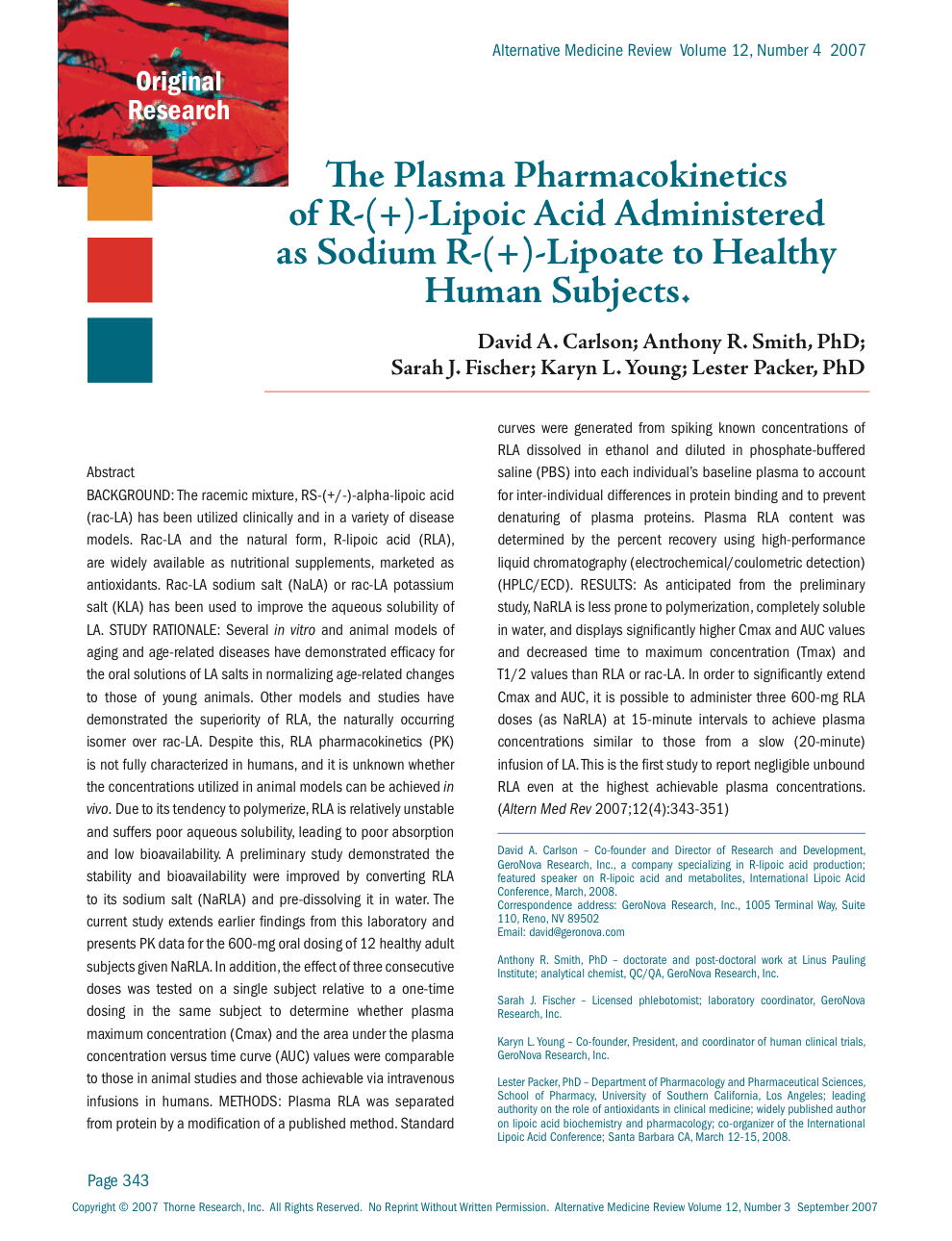Abstract
BACKGROUND: The racemic mixture, RS-(+/-)-alpha-lipoic acid (rac-LA) has been utilized clinically and in a variety of disease models. Rac-LA and the natural form, R-lipoic acid (RLA), are widely available as nutritional supplements, marketed as antioxidants. Rac-LA sodium salt (NaLA) or rac-LA potassium salt (KLA) has been used to improve the aqueous solubility of LA. STUDY RATIONALE: Several in vitro and animal models of aging and age-related diseases have demonstrated efficacy for the oral solutions of LA salts in normalizing age-related changes to those of young animals. Other models and studies have demonstrated the superiority of RLA, the naturally occurring isomer over rac-LA. Despite this, RLA pharmacokinetics (PK) is not fully characterized in humans, and it is unknown whether the concentrations utilized in animal models can be achieved in vivo. Due to its tendency to polymerize, RLA is relatively unstable and suffers poor aqueous solubility, leading to poor absorption and low bioavailability. A preliminary study demonstrated the stability and bioavailability were improved by converting RLA to its sodium salt (NaRLA) and pre-dissolving it in water. The current study extends earlier findings from this laboratory and presents PK data for the 600-mg oral dosing of 12 healthy adult subjects given NaRLA. In addition, the effect of three consecutive doses was tested on a single subject relative to a one-time dosing in the same subject to determine whether plasma maximum concentration (Cmax) and the area under the plasma concentration versus time curve (AUC) values were comparable to those in animal studies and those achievable via intravenous infusions in humans. METHODS: Plasma RLA was separated from protein by a modification of a published method. Standard curves were generated from spiking known concentrations of RLA dissolved in ethanol and diluted in phosphate-buffered saline (PBS) into each individual’s baseline plasma to account for inter-individual differences in protein binding and to prevent denaturing of plasma proteins. Plasma RLA content was determined by the percent recovery using high-performance liquid chromatography (electrochemical/coulometric detection) (HPLC/ECD). RESULTS: As anticipated from the preliminary study, NaRLA is less prone to polymerization, completely soluble in water, and displays significantly higher Cmax and AUC values and decreased time to maximum concentration (Tmax) and T1/2 values than RLA or rac-LA. In order to significantly extend Cmax and AUC, it is possible to administer three 600-mg RLA doses (as NaRLA) at 15-minute intervals to achieve plasma concentrations similar to those from a slow (20-minute) infusion of LA. This is the first study to report negligible unbound RLA even at the highest achievable plasma concentrations. (Altern Med Rev 2007;12(4):343-351)

